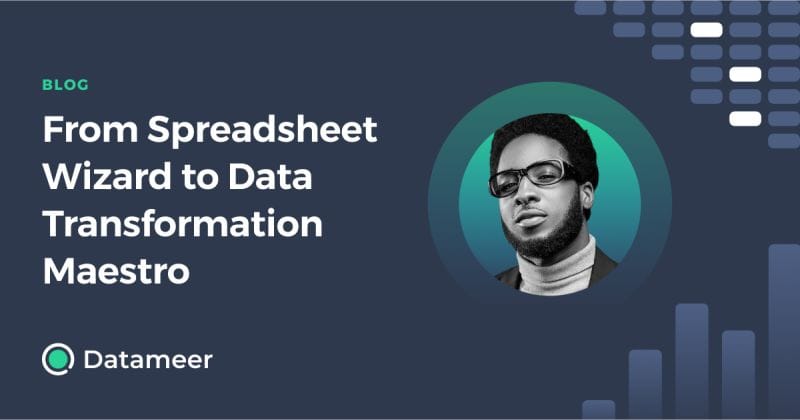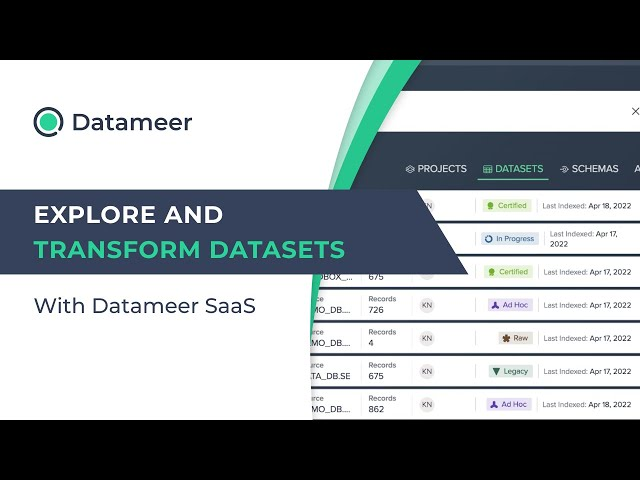From Spreadsheet wizard to Data Transformation Maestro: My Journey With No-SQL Tools as a Data Analyst
- Ndz Anthony
- August 31, 2023

Hello! If you’re reading this, chances are good that you share my enthusiasm for data analysis. I’m NDZ Antony, and I’ve worked in the data analysis industry for a while. Beginning as a SAP BI Consultant and progressing into what I like to refer to as a “Data Transformation Maestro,” my journey has been an exhilarating ride.
My Humble Beginnings…..
My career in data analysis kicked off as an SAP BI Consultant. Back then, my toolkit was primarily composed of SAP Business Intelligence Stack, SAP HANA Modeling Studio, and yes, the good old Excel.
These tools were my bread and butter, helping me navigate the complex world of Business Intelligence.
Excel was particularly interesting. It was a jack of all trades — versatile but not always the most efficient tool for every job. I used it for everything from basic data entry to creating rudimentary visualizations. But as I delved deeper into the data, I started to see the cracks.
Why Spreadsheets Fell Short
While Excel was a powerful tool in its own right, it had its limitations. For instance, the manual nature of Excel became a bottleneck in my workflow. The inability to auto-refresh data or create dynamic visualizations made it less than ideal for complex data analysis tasks. Pivoting data and formatting charts felt cumbersome and time-consuming.
Moreover, Excel lacked the robustness of a database. It didn’t offer the same level of data integrity or the ability to handle large datasets efficiently. These limitations prompted me to seek alternatives that could offer more than what traditional spreadsheets could deliver.
The Shift to No-SQL Tools
As my career progressed, I found that traditional spreadsheets were increasingly unable to meet the demands of modern data analysis. That’s when I discovered the power of low-code SQL tools like SAP HANA Studio and SAP Analytics Cloud (SAC). These tools introduced me to a new way of working with data that was far more efficient and scalable.
The low-code environment was a revelation. It allowed me to perform complex data transformations without getting bogged down in code. The intuitive drag-and-drop interface made it incredibly easy to manipulate data, offering a level of flexibility that was simply not possible with traditional spreadsheets.
And by the way, It’s worth noting that the tech industry is buzzing with advancements in low-code platforms. For instance, Gartner predicts that by 2024, low-code application development will be responsible for more than 65% of application development activity. This trend highlights the growing significance of low-code tools in the realm of data analysis.
No-SQL Tools vs. Spreadsheets
Let’s take a moment to dissect the technical nuances that set low-code SQL tools apart from traditional spreadsheets. After all, the devil is in the details.
Data Refresh and Automation
In a spreadsheet, refreshing data often requires manual intervention. You have to pull in new data, update formulas, and re-run calculations. In contrast, low-code SQL tools offer automated data refresh capabilities. They can pull in real-time data from various sources, ensuring that your analysis is always up-to-date.
Scalability and Performance
Spreadsheets struggle with large datasets. They become sluggish, and sometimes, they even crash. No-SQL tools, on the other hand, are built for scale. They can handle massive amounts of data without breaking a sweat, thanks to their underlying architecture and optimized algorithms.
Data Governance
While spreadsheets offer basic password protection, they lack advanced data governance features. No-SQL tools come with robust security measures, including role-based access control, encryption, and audit trails, ensuring that your data is always in safe hands.
Visualizations and Reporting
Creating visualizations in spreadsheets can be a cumbersome process. You’re limited by the types of charts and graphs available, and customization options are often lacking. No-SQL tools offer a plethora of visualization options, from basic bar charts to complex heat maps, all customizable to your heart’s content.
Query Complexity
In spreadsheets, complex queries often involve nested formulas that are hard to manage and debug. No-SQL tools simplify this by allowing you to build complex queries using a drag-and-drop interface, making the process more intuitive and less error-prone.
Integration Capabilities
Spreadsheets are often standalone tools that require manual data imports and exports. No-SQL tools can integrate seamlessly with other platforms, such as Snowflake, enabling a more streamlined and efficient workflow.
This technical showdown clearly demonstrates why no-SQL tools are the future of data analysis. They offer a level of sophistication and flexibility that spreadsheets simply can’t match.
The Datameer Difference: My Honest Opinion

In the course of my exploration, I stumbled upon a tool that felt like a breath of fresh air in the often-complicated world of data analysis: Datameer. Working with Datameer was a revelation. Imagine being able to perform ad hoc analysis on your Snowflake datasets without writing a single line of code. That’s right, not one. Here are some of the surprising features of Datameer that led me to change my mindset towards No-SQL tools:
The Citizen Data Analyst
The first thing that caught my eye was Datameer’s focus on empowering the ‘citizen data analyst.’ You don’t need to be a coding wizard to use Datameer. The platform is designed in such a way that anyone with a basic understanding of what they want to achieve can perform ad hoc analysis on their Snowflake datasets. No need to create a multitude of worksheets or write lines of code. It’s as simple as drag-and-drop, and voila, you have your insights.
Low-Code, High Impact
Datameer’s low-code environment was a perfect fit for me. I’ve always been a fan of platforms that allow you to do more with less. With Datameer, I could create complex transformations and queries without writing a single line of code. And the best part? Datameer generates SQL for these transformations, bridging the gap between low-code convenience and high-level SQL capabilities.
Seamless Integration and Flexibility
Datameer didn’t just work in isolation; it integrated seamlessly with my existing tools and platforms. Whether it was pulling data from Snowflake or pushing insights to other analytics tools, Datameer made it all effortless. This level of integration and flexibility is something I hadn’t experienced before.
The Final Verdict
Every tool I’ve used in my data analysis journey has taught me something valuable. But Datameer? It was a revelation. It combined the best of both worlds: the simplicity of low-code and the power of SQL. It made me realize that you don’t have to compromise on functionality to achieve ease of use.
So, if you’re still on the fence about making the switch from traditional tools to more advanced, low-code SQL platforms, give Datameer a try. Trust me, you’ll have a story to tell, just like I do.


